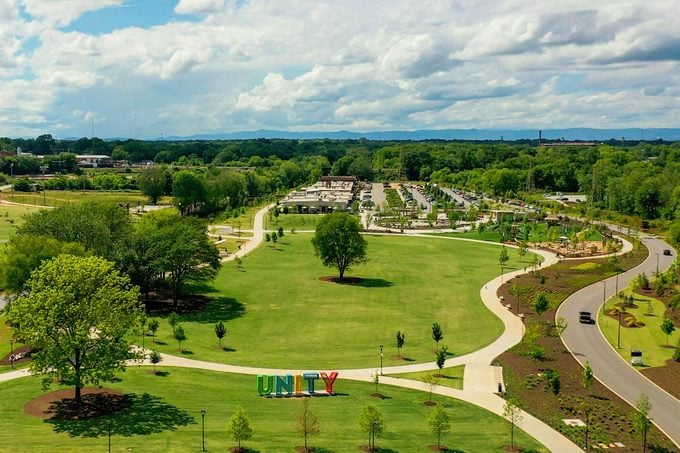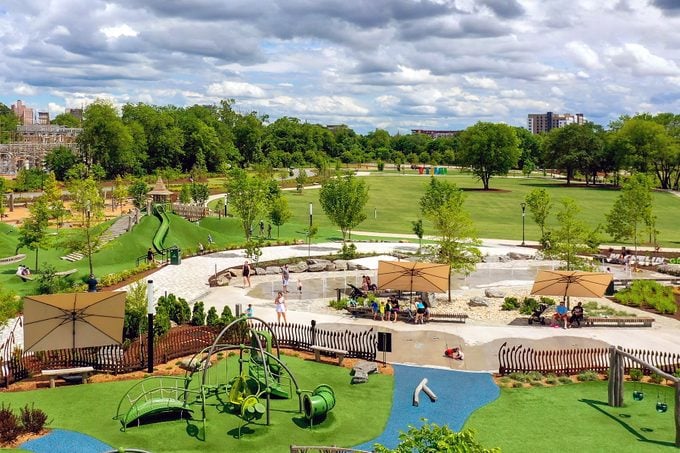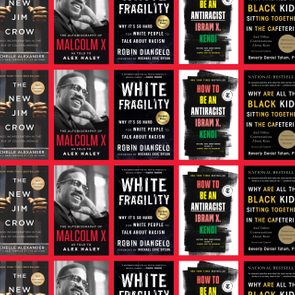How Unity Park Heals a Decades-Old Racial Injustice and Unites a Community
Updated: Sep. 19, 2023
This park rights a historic wrong and brings people together with nature

“Eighty-two years we waited for the park,” says City Councilwoman Lillian Brock Flemming. “The little children don’t know the history, but they know they’ll have a good time when they get there.”
Opened in 2022, Unity Park is a60-acre, $60-million marvel of modern landscape architecture in the Southernside neighborhood of Greenville, South Carolina. The city, at the foot of the Blue Ridge Mountains and cleft by the Reedy River, has equipped the park with every bell and whistle imaginable for its 72,000 residents. But the true transformation isn’t one of Greenville’s facilities—it’s of Greenville’s spirit.
Unity Park now stands where two formerly segregated parks, Mayberry Park and Meadowbrook Park, stood off for nearly a century. Back in 1927, Mayberry Park was the only place in Greenville where Black children could play.
“It was all we had,” says Mary Duckett, president of Southernside Neighborhoods in Action.
But the city treated the park as its spare room. Greenville took a portion for a police shooting range (kids knew to steer clear during Saturday target practice), and then some more for a Public Works facility, which housed a landfill, trash incinerators and a parking lot for garbage trucks.
“I’ve heard people describe it as the community’s junkyard,” says Greenville Housing Fund President Bryan Brown.
In 1938, the city took half of Mayberry Park to build Meadowbrook Park, a minor league baseball stadium. Mayberry Park was reduced to a sandlot, living in the literal shadow of its neighbor’s prize colosseum—one that explicitly barred the Black residents who had frequented the park for over a decade.
In 1939, when South Carolina was in the clutches of Jim Crow, a man named E.B. Holloway, who was Greenville’s first Black mail carrier, petitioned City Council for a true city park for the Black community.
“We want the park because we need it,” Holloway wrote to the Greenville Piedmont newspaper. “We want the park because our social and recreational life is at stake. Give us a park.”

The City Council agreed to build a real park … and then did nothing for nearly a century. So the Unity Park that visitors enjoy today makes good on a promise long forsaken. Fittingly, all who enter are greeted by Holloway himself, along with his wife, Hattie Jordan Holloway. The pair are pictured on a mural under the words“A Promise Fulfilled.” Many of the Holloways’ descendants attended Unity Park’s grand opening.
With its massive green spaces and restored wetlands, as well as walking and biking trails, covered picnic areas, state-of-the-art playgrounds, splash pads, basketball courts, baseball fields and even outdoor classrooms, Unity Park is a utopia of fellowship and leisure far beyond anything Holloway could have dreamed.
But Greenville is aware that thepark will invite gentrification and displacement of longtime Southern-siders.
“When you create a new community asset, it always generates investment interest and makes the surrounding area very attractive to people who haven’t lived there before,” says Brown.
Aiming to fulfill Unity Park’s namesake promise, the city has donated eight acres of land around the park for affordable housing. Workers have broken ground on four developments so far.
“You can never catch up,” says Councilwoman Flemming, but it’s a start.
“Look at the word unity. It’s the last part of the word community,” says Duckett. “Southernside has always been the type of community that invited folks in.”
In 2023, Unity Park’s restoration earned an award from the National Recreation and Park Association.



















